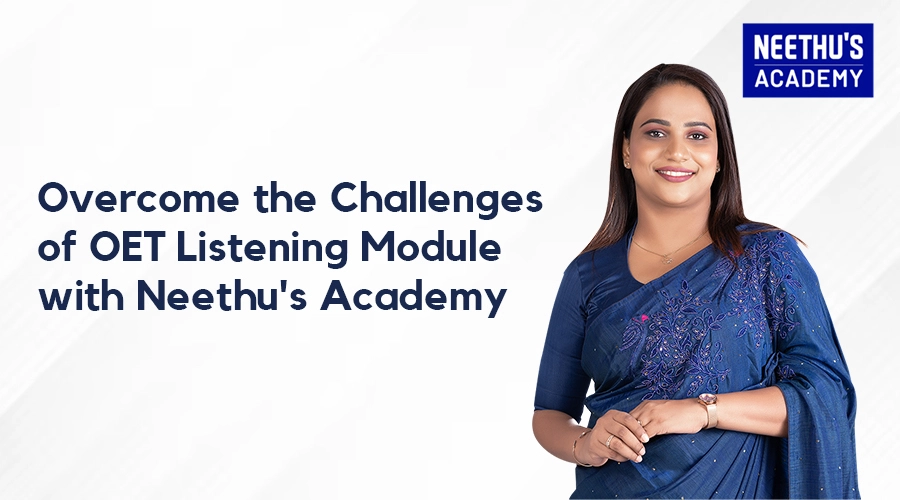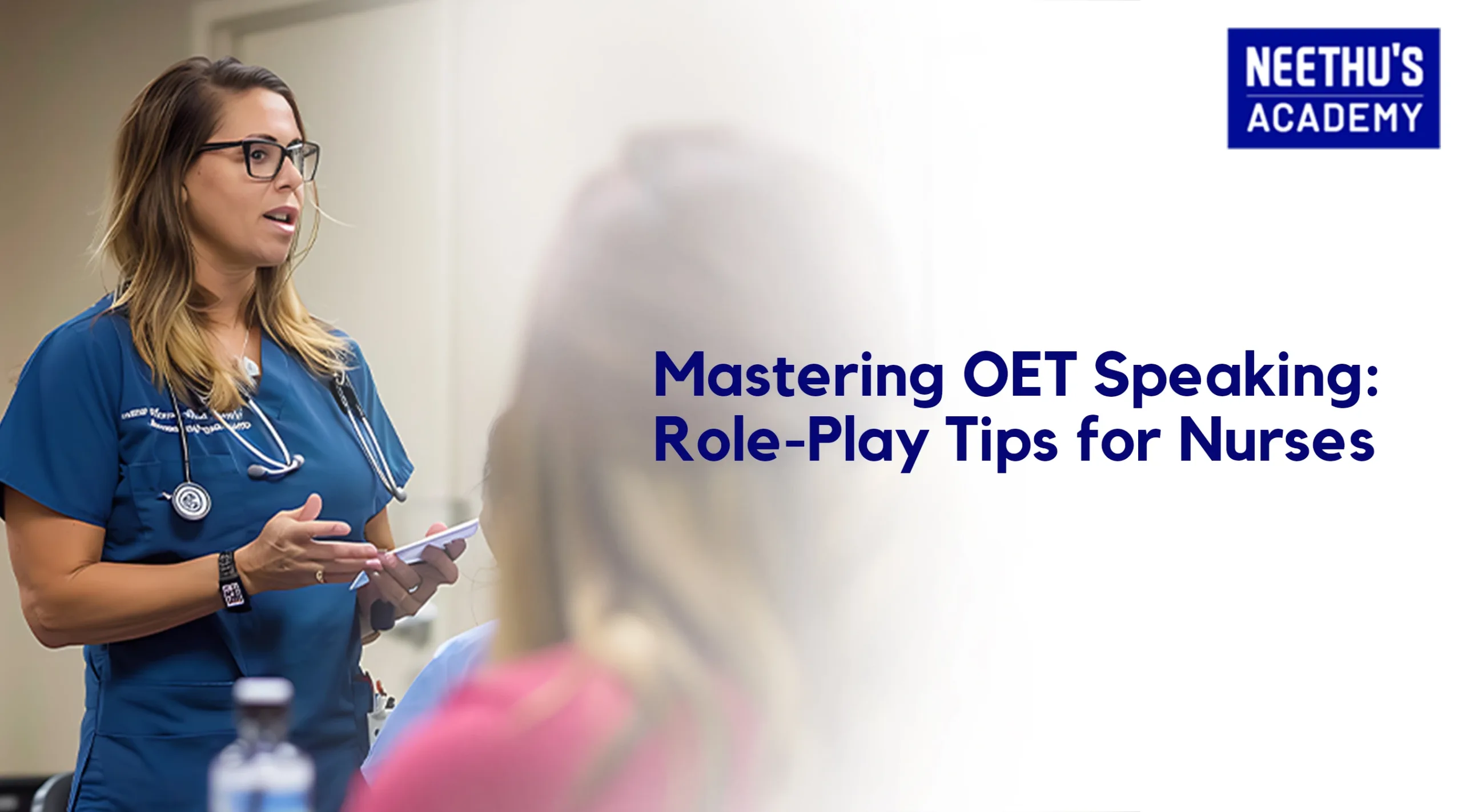Overcome the Challenges of OET Listening Module with Neethu’s Academy
The OET Listening paper comprises three parts. In Part A, doctors and patients engage in two conversations, and test takers must fill in notes about the medical encounters. Part B includes six short dialogues between various healthcare professionals, such as doctors, nurses, and therapists, and testers must answer multiple-choice questions. Part C consists of 12 multiple-choice questions divided into two groups of six. Each set of six multiple-choice questions is based on recordings that are four to five minutes in length and are presented in different formats, such as an interview, a presentation, or a training, covering general topics in healthcare.
To overcome OET listening challenges, it’s important to:
- Listen Actively: Pay close attention to the recording, focusing on the main ideas and important details. Engage your listening skills to grasp the context and nuances of the conversation.
- Read All Answer Choices: Make sure to read all the answer choices thoroughly before making a decision. This helps you understand the range of possible options and prevents hasty decisions.
- Consider Context: Pay attention to the context of the conversation. Sometimes, certain words might have multiple meanings, and the context will help you determine the correct interpretation.
- Analyse and Eliminate: As you mentioned, not all answer choices will accurately represent the speaker’s intended meaning. Carefully analyze each choice and eliminate those that do not align with the context or tone of the conversation.
- Understand Paraphrasing: The answer choices might not use the exact words from the recording, but they could be paraphrased versions. Be prepared to recognize synonyms or related phrases.
- Use Your Medical Knowledge: The OET is a test for healthcare professionals, so your medical knowledge can help you understand the content and context of the recording. However, rely primarily on the information provided in the recording.
- Practice Regularly: Familiarity with the format and types of questions is key. Regular practice with sample questions and mock tests will improve your ability to decipher the intended meaning behind the answer choices.
OET Listening Part C can indeed be challenging, but with the right strategies and preparation, you can certainly improve your performance. Here are some tips to help you overcome the challenges of OET Listening Part C:
- Familiarize Yourself with the Format: Understand the format of Part C. It usually involves a healthcare professional (such as a doctor) having a conversation with a patient. The conversation might cover topics like medical history, diagnosis, treatment options, or follow-up instructions.
- Practice Active Listening: Train yourself to be an active listener. Focus on the conversation, take notes, and identify key points. This will help you retain information and answer questions accurately.
- Predict and Anticipate: While listening, try to predict what the speaker might say next based on context. This will help you stay engaged and understand the conversation more effectively.
- Note-Taking: Develop a shorthand system for taking notes. Jot down key medical terms, symptoms, medications, and any important details. Your notes will be crucial while answering questions later.
- Identify the Speakers: Pay attention to who is speaking – the healthcare professional or the patient. This will help you understand the roles and perspectives of each speaker.
- Medical Vocabulary: Familiarize yourself with medical terminology related to different specialities. This will make it easier for you to understand and interpret the conversation.
- Practice Regularly: Practice listening to medical podcasts, videos, or other relevant content. This will help you get accustomed to various accents and improve your overall listening skills.
- Work on Concentration: Practice focusing your attention for extended periods. Avoid distractions while practising to simulate exam conditions.
- Improve Time Management: The questions in Part C can be intricate, so manage your time well. Don’t spend too much time on one question if you’re stuck. Move on and come back to it later if needed.
- Understand Context: Try to grasp the overall context of the conversation. This will help you infer answers even if you miss certain details.
- Simulate Exam Conditions: Practice under timed conditions to simulate the real exam environment. This will help you become more comfortable with the time constraints.
- Review Your Mistakes: After practicing, review the questions you got wrong. Understand why you made those mistakes and learn from them.
- Listen to a Variety of Accents: The OET includes a range of accents, so expose yourself to different accents through movies, TV shows, podcasts, and videos.
- Take Care of Yourself: Make sure you’re well-rested and focused on the day of the exam. A clear mind can significantly improve your listening skills.
In conclusion, conquering OET Listening challenges requires a combination of strategic preparation, active listening skills, medical vocabulary enhancement, and consistent practice. Remember, consistent practice and focused preparation are key to overcoming challenges of OET Listening Part C. Gradually, you’ll become more comfortable with the format and content, allowing you to perform at your best on exam day, and join Neethu’s Academy for expert guidance to work on these strategies. Remember, perseverance and dedication are the keys to overcoming these challenges of OET listening to achieve your desired score.





